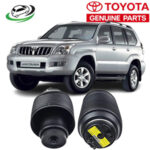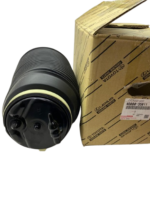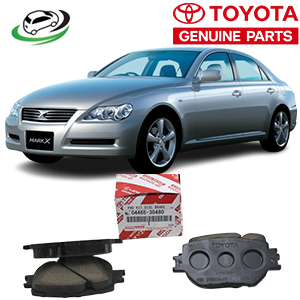-9%






Toyota Landcruiser Prado 120 Rear LH Cylinder Assy 48080 35011
Part No: 48080 35011
Brand: Genuine
Fitting Position: Rear RH
Fits: Toyota Landcruiser Prado 120
KShs65,000 Original price was: KShs65,000.KShs59,000Current price is: KShs59,000.
Payment Methods:
The rear left cylinder assembly, commonly referred to in automotive contexts, plays a crucial role in the braking system of vehicles. It houses essential components that ensure effective braking, enhancing vehicle safety and performance. Understanding its structure, function, types, maintenance, and signs of wear is vital for both vehicle owners and automotive professionals.
The rear left cylinder assembly is part of the drum brake system in many vehicles. Its primary function is to create hydraulic pressure, which actuates the brake shoes against the inner surface of the brake drum. This action generates the friction needed to slow down or stop the vehicle effectively.
A typical rear left cylinder assembly comprises several key components, including:
Drum brake cylinders are the most common type found in rear left cylinder assemblies. They utilize hydraulic force to push the brake shoes outward against the drum. They are often less expensive than disc brake systems but can be less effective in high-performance situations.
Some vehicles, particularly performance or heavy-duty models, may use specialized rear left cylinder assemblies designed for enhanced performance. These can include features like larger pistons, better materials for heat dissipation, and improved sealing technologies.
In modern vehicles, dual-circuit rear left cylinder assemblies are used for safety. These systems ensure that if one circuit fails, the other remains operational, providing continued braking capability.
To install a rear left cylinder assembly, you will need the following tools and materials:
1. Safety Precautions:
2. Raise the Vehicle:
3. Remove the Wheel:
4. Remove the Brake Drum:
5. Disconnect the Brake Lines:
6. Remove the Old Cylinder Assembly:
7. Install the New Cylinder Assembly:
8. Reconnect the Brake Lines:
9. Reinstall the Brake Drum:
10. Reinstall the Wheel:
11. Refill and Bleed the Brake System:
12. Test the Brakes:
Regular maintenance is crucial for ensuring the longevity and performance of the rear left cylinder assembly. Here are some essential maintenance tips:
Conduct periodic inspections of the brake system, focusing on the cylinder assembly for any signs of leaks or damage. Look for fluid buildup around the cylinder, as this indicates a potential seal failure.
Regularly check the brake fluid level and condition. Replace old or contaminated fluid, as this can lead to hydraulic failure and reduced braking efficiency.
Clean the brake components to remove dust and debris that can accumulate and affect performance. Use brake cleaner to ensure all parts are free from contaminants.
Pay attention to any changes in braking performance. If you notice increased pedal travel, reduced braking efficiency, or unusual noises, inspect the rear left cylinder assembly and other brake components for issues.
Recognizing the signs of wear and failure in the rear left cylinder assembly is crucial for maintaining vehicle safety. Common indicators include:
If you notice brake fluid leaking from the rear left cylinder assembly, it is a sign that the seals or gaskets may be damaged and require replacement.
A lack of responsiveness when pressing the brake pedal may indicate a failure in the hydraulic system, potentially caused by a faulty cylinder assembly.
Grinding, squeaking, or hissing noises during braking may signal that the brake pads or shoes are worn or that there is an issue with the cylinder assembly.
In modern vehicles, dashboard warning lights may illuminate when there is a problem with the braking system. If this occurs, immediate inspection is essential.
The rear left cylinder assembly is a vital component of a vehicle’s braking system, responsible for ensuring effective and safe braking performance. Understanding its function, components, installation, maintenance, and signs of wear can help vehicle owners and automotive professionals maintain optimal braking performance and enhance safety on the road.
Regular inspections and prompt attention to any signs of wear or malfunction can ensure the longevity and reliability of the rear left cylinder assembly, ultimately contributing to a safer driving experience. By prioritizing brake maintenance, vehicle owners can ensure their vehicles perform at their best, providing peace of mind on every journey.
Follow us on Facebook for more parts.
You must be logged in to post a review.
No account yet?
Create an AccountTEAM ONESTOP
Typically replies within minutes
Looking for parts?
Team Onestop
Car Parts Specialists
🟢 Online
WhatsApp us
Reviews
Clear filtersThere are no reviews yet.